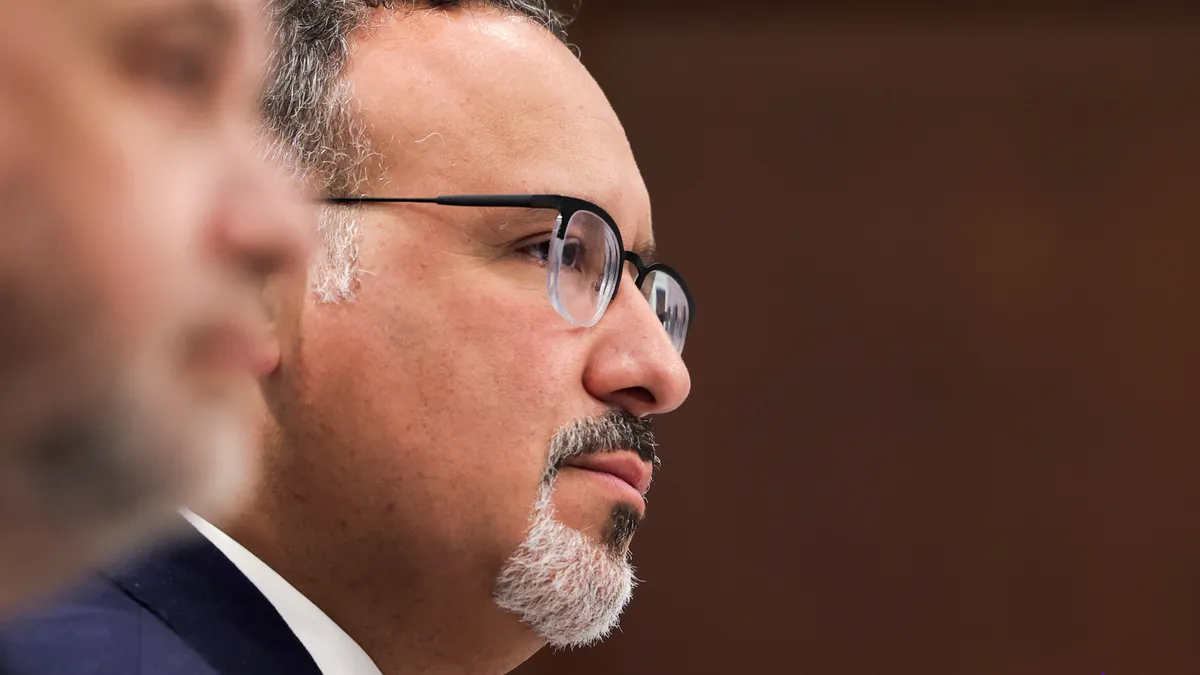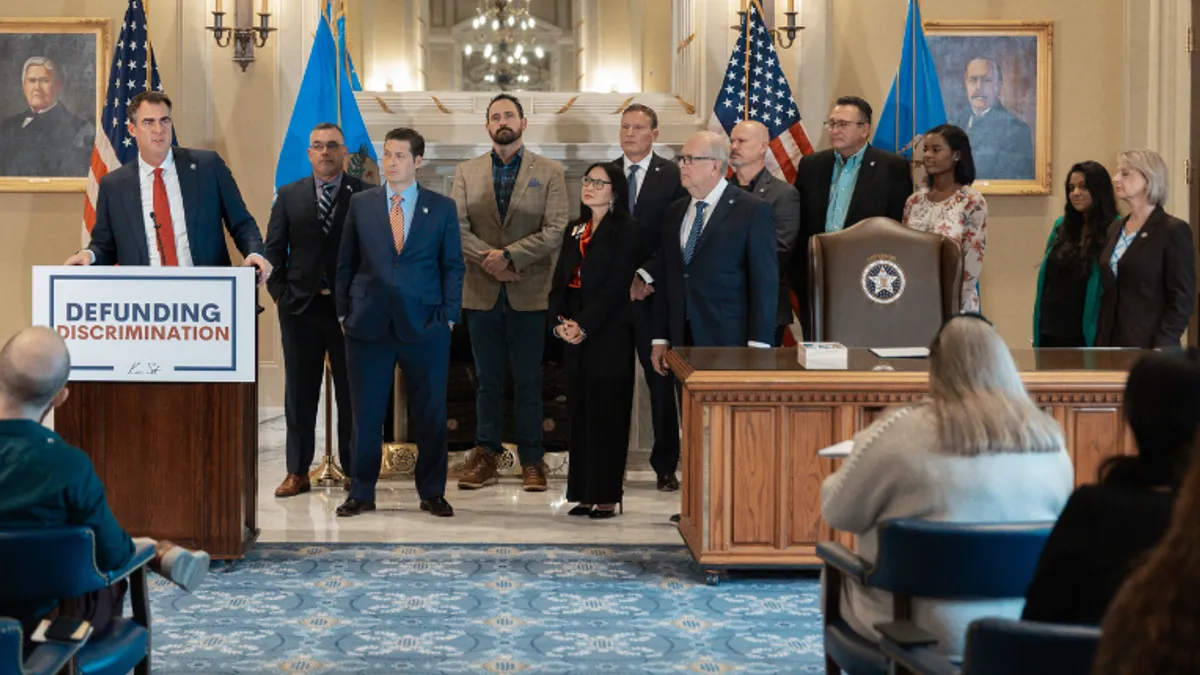Dive Brief:
- Supporting teacher prep programs through regulatory relief is key to addressing the ongoing teacher shortage that is impacting districts nationwide, said Linda Darling-Hammond, president and CEO of the Learning Policy Institute, during EdPrepLab's Second Annual Virtual Policy Summit Tuesday.
- One potential pending policy solution is the EDUCATORS for America Act, introduced by Sen. Jack Reed, D-R.I., and Rep. Alma Adams, D-N.C., in December to invest $1 billion annually for states to enhance teacher preparation programs and provide grants for strategies to meet K-12 workforce needs, said Lynn Gangone, president and CEO of the American Association of Colleges for Teacher Education.
- Funds from the $122.7 billion awarded to school districts nationwide through the pandemic-relief American Rescue Plan can also be used to fuel innovative, collaborative solutions between higher education and K-12 leaders to fix teacher shortages, according to Roberto Rodriguez, assistant secretary at the U.S. Department of Education's Office of Planning, Evaluation and Policy Development.
Dive Insight:
The current proposals to address teacher shortages through pending legislation can help raise teacher morale even when the policy solutions can't be enacted in the moment, Darling-Hammond said.
In California, teacher education enrollment has increased this year because the state recently passed several policy reforms such as funding boosts to teacher residency grants and service scholarships, she said.
"Teachers feel like somebody is paying attention," Darling-Hammond said.
American Rescue Plan funding can also help with short-term solutions like recruitment and retention bonuses for teachers. These recovery dollars could be further used to launch teacher residency programs that fund student teachers for a full year of clinical experience, Darling-Hammond said.
Districts paying off a teacher's student debt if they agree to work for an extended period of time is another retention strategy that could be expanded at the federal level, Darling-Hammond said.
While solutions are developed to attract and retain teachers, Gangone said leaders can't discount the current environment they're asking professionals to enter. In fact, she said the same type of sentiment behind legislation seeking to censor K-12 teachers is seeping into teacher education programs at colleges.
This type of legislation is in some ways seeking to "demonize educators," Gangone said.
A recent survey by nonprofit Stand for Children revealed current teachers share similar concerns. If state laws that "prevent honest teaching and conversations" impacted their classroom, 37% of 2,000 teachers surveyed nationwide said they would likely quit.
But at the moment, districts are still working to innovate with the American Rescue Plan funding available, Rodriguez said.
In Indiana, where Indianapolis is raising teacher pay by 3%, the state is investing American Rescue Plan funding to assist with licensure in high-need area credentialing for staff, and North Carolina is using the relief funds to offer $33,000 scholarships for STEM and special education teachers, Rodriguez said. New Mexico and West Virginia are also using American Rescue Plan funding for teacher residencies, he added.
"We're in a moment of real challenge in the field," Rodriguez said. "We're also in a moment of opportunity, I believe, and it's about listening to the field, following the field and putting some of these dollars that we have right now for a comprehensive solution."












